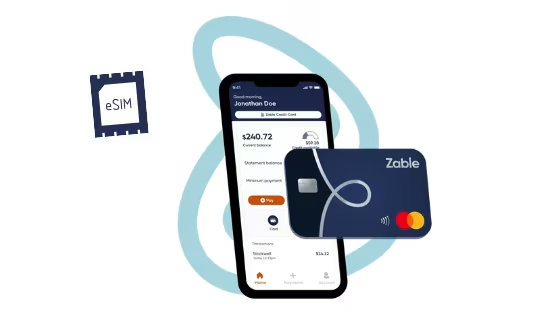
The Real Cost of Ignoring Silent Roamers? Market Share.
There’s a silent rebellion happening in the mobile world—and most operators don’t even realize it. It’s led by travelers who don’t complain, don’t call, and don’t roam. They simply switch to airplane mode, hop between Wi-Fi hotspots, or quietly install an eSIM. And just like that, they vanish from the revenue charts—taking market share with them. silent roamers and telecoms
These are the silent roamers — travelers who’ve stopped using their operator’s roaming services not because they can’t afford them, but because they no longer trust them. They’ve learned to live without traditional roaming. And while the industry might think silence means satisfaction, it’s actually the sound of opportunity slipping away.
Who Are Silent Roamers, Really?
You probably know one. Maybe you are one. Silent roamers are the travelers who avoid roaming at all costs — out of fear, frustration, or simple habit. They:
- Turn off mobile data when they land.
- Rely on hotel and café Wi-Fi.
- Buy local prepaid SIMs.
- Or increasingly, turn to global eSIM providers for seamless, no-surprise connectivity.
They don’t make noise. They don’t demand refunds. They just quietly stop engaging. And while operators chase the next flashy 5G campaign, these customers are already gone.
The Dangerous Comfort of “No Complaints”
Here’s where it gets tricky: silent roamers rarely register as a problem. No angry calls. No NPS drop. No social media blow-ups. On paper, everything looks fine.
But underneath that calm surface, revenue is bleeding out. Every silent roamer who refuses to buy a roaming package is a customer slipping away from the operator’s ecosystem. Every traveler who downloads an eSIM from a competitor is building a new habit — one that excludes their primary provider.
And once customers learn to live without you, good luck bringing them back.
How Big Is This Problem?
Let’s put it in perspective. A GSMA Intelligence report found that 47% of international travelers avoid mobile data abroad altogether. In parts of Europe, that number rises to 60%. That’s not a small oversight — that’s half the market quietly disengaging from roaming altogether.
Now imagine if just 20% of those silent roamers became active roamers again. The potential revenue upside would be massive. Instead, operators continue to lose ground to eSIM startups, local SIM sellers, and even travel apps that bundle connectivity into their services.
This isn’t about a few missed euros. It’s about long-term erosion of trust, loyalty, and ultimately — market share.
Why Operators Keep Losing Silent Roamers
It’s not complicated. Travelers have made their verdict clear:
- Pricing feels like a gamble. Nobody wants to risk a €300 surprise bill for accidentally streaming a video abroad.
- Communication is confusing. Roaming zones, fine print, expiration times — it’s too much work to understand.
- Alternatives are easy. Buying an eSIM online takes five minutes, works instantly, and costs less.
And here’s the real kicker: the eSIM revolution didn’t happen in a vacuum. These very frustrations fueled it. Every bad roaming experience created a future eSIM user. Silent roamers didn’t disappear — they just found smarter ways to stay connected.
Silent Roamers Today, Silent Switchers Tomorrow
Ignoring silent roamers doesn’t just mean losing short-term revenue — it creates long-term churn. A traveler who installs an Airalo, Nomad, or Airhub eSIM while abroad might soon use the same provider at home. A business that outfits its employees with global eSIMs will eventually question why it’s still paying for corporate roaming bundles.
Once users experience affordable, transparent connectivity, they stop seeing their operator as essential. And that’s when the quiet disengagement turns into actual market migration.
What Market Share Loss Really Looks Like
It starts subtly — roaming revenue dips, then stagnates. Enterprise clients shift to digital-first providers. Younger, tech-savvy users explore flexible prepaid or data-only options.
Eventually, operators find themselves competing not just with other carriers, but with entirely new ecosystems — global eSIM brands, fintech apps offering travel connectivity, and even airlines and travel platforms bundling data with tickets.
By the time the alarm bells ring, these newcomers already own the traveler relationship. The operator becomes an afterthought.
The Fix: Listening to the Silence
There’s no silver bullet, but there’s a clear path forward — one that starts by treating silence as feedback, not as peace of mind.
- Price transparently. Scrap the complicated zone charts. Offer roaming that feels as predictable as home use — no hidden conditions, no shock bills.
- Communicate simply. Don’t wait until customers are boarding their flight. Nudge them with human messages: “Heading to Spain? 5GB for €10 — activate in one tap.”
- Bundle smartly. Include roaming in premium plans, family packages, or loyalty tiers. Make it feel like a natural extension of their regular plan.
- Embrace eSIMs. Don’t fight the trend — integrate it. Let customers activate travel data digitally under your brand instead of pushing them toward third-party providers.
- Track the quiet ones. Use data analytics to identify which customers stop using data abroad. Treat every drop in roaming activity as a sign of disengagement, not satisfaction.
These aren’t just customer retention tactics — they’re survival strategies. Silent roamers represent not just lost income, but a shrinking share of the future connectivity market.
A Conversation the Industry Can’t Ignore
Silent roamers may never send angry tweets or demand refunds, but they speak in other ways—through data, behavior, and disengagement. Every megabyte they don’t use, every eSIM they download, every Wi-Fi network they jump to is a clear message: “I don’t trust you to connect me.”
At Alertify, we’ve watched this pattern unfold in real time. Year after year, more travelers shift from traditional roaming to flexible, on-demand connectivity options. The winners aren’t necessarily the cheapest—they’re the ones who listen, simplify, and rebuild trust.
The Bottom Line
Ignoring silent roamers is like ignoring a slow leak in your boat—it doesn’t sink you today, but it will eventually. Telcos can’t afford to mistake silence for satisfaction any longer.
The next billion-dollar question for the telecom industry isn’t how to price roaming smarter. It’s how to stop travelers from roaming away. Silent roamers aren’t a mystery segment—they’re a mirror showing where the industry went wrong and where it must evolve next.
Because the real cost of ignoring them isn’t just lost roaming revenue.
It’s your customers.
Your reputation.
And ultimately, your market share.












